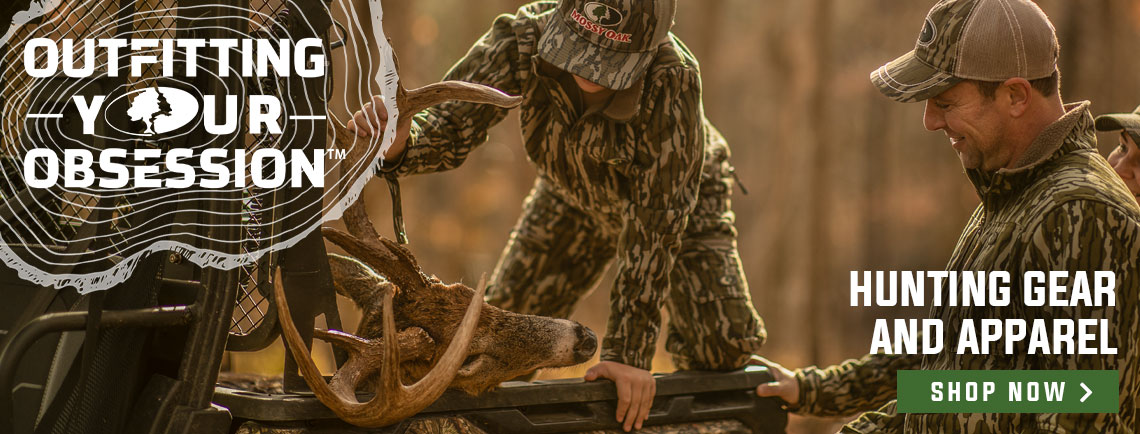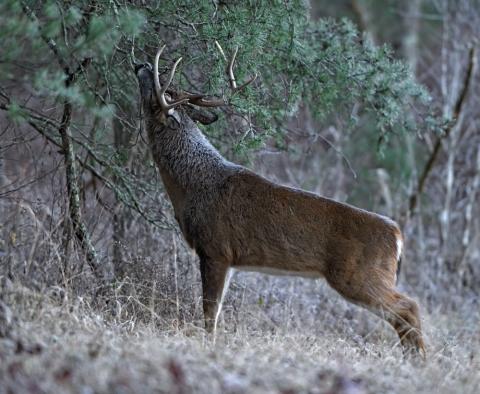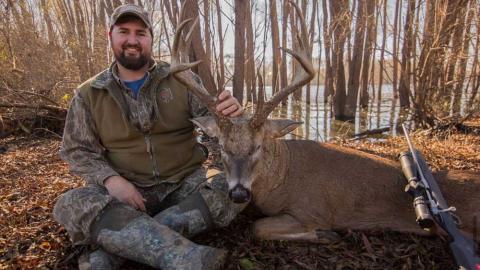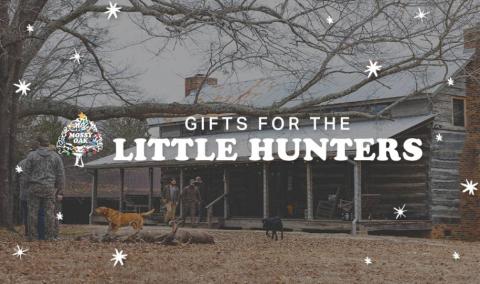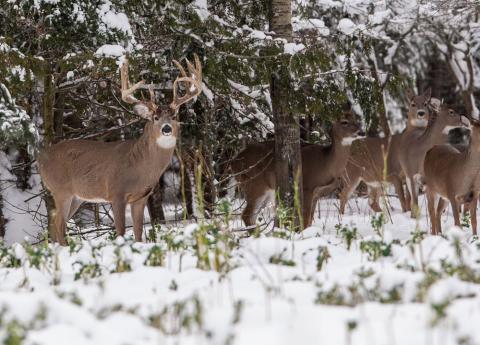Heath Wood
The whitetail rut, that magical period when deer are actively breeding, is the pinnacle of hunting season for many. It's a time of heightened deer activity, unpredictable encounters, and opportunities galore. Yet, amidst the chaos and excitement, hunters face a crucial decision. Should they focus on pursuing a specific target buck or embrace the rut's free-for-all dynamics?
A couple of years ago, while hunting near my home in southern Missouri, I got to experience a little of both scenarios. After shooting a mature with my bow in early October, I had to spend the remaining days leading up to the firearms season looking for another target buck. In Missouri, hunters are only allowed two bucks, one with a bow and one with a rifle or muzzleloader. On October 26th, I had a mature buck show on the property I was hunting for the first time. I continued to get photos of this buck for a week when he disappeared again. Although I knew he was big enough to shoot, I never considered him a hitlist buck.
Fast forward to November 18th, during the firearms season, when I sat comfortably inside an elevated blind with my rifle in hand. I had been sitting for two hours when a small buck pursued some does in front of me, then continued to make a scrape on the border of the timber and field where my blind sat. Around 9:30 a.m., I noticed the same doe quickly approaching the field as if something was chasing her. I witnessed a mature buck a few yards behind her, lip curled and ready for her to stop so he could commence breeding. At that moment, I did not realize it was the same buck I had photos of from mid-October that had disappeared; all I knew was he was a mature buck, and I needed to make the shot. Fortunately, I was able to make a successful harvest, and several minutes after recovering, I realized that it was the same buck my camera had captured. You never know who will show up when the rut is in full swing. To make an informed decision about whether to target a specific buck or join the rut free-for-all, it's essential to understand the behavior of whitetail bucks during this time.
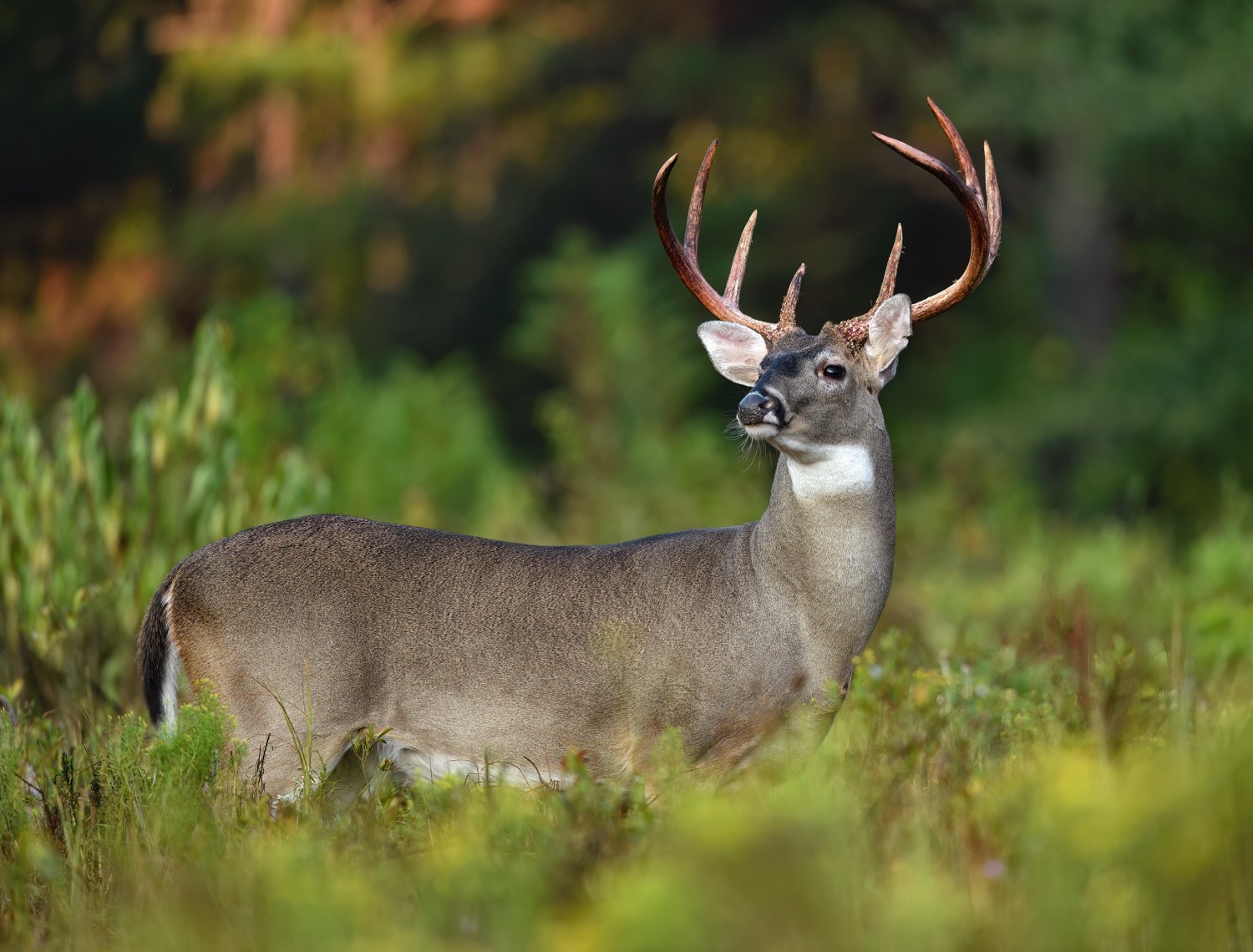
Targeting a Specific Buck During the Rut
When you have a particular buck in mind, you can spend time scouting and learning about his habits, preferred routes, and core areas. This targeted approach allows you to use game cameras to obtain key data to set up the best locations for that specific deer.
Pursuing a specific buck can also create a deep, personal connection to your hunting experience. The journey of tracking and encountering the same deer over multiple seasons can be immensely rewarding. Often, hunters create names for each targeted buck to help identify them while hunting, or as in my case, after the harvest, you can refer to game camera photos to see if it was a target buck or if he was in the area because of the rut. Although I quickly decided that the buck was mature enough to shoot, many hunters elect to have a specific target to set clear expectations for what they consider a successful hunt, which can help alleviate disappointment.
One negative effect that can result from having a target buck and a strict plan only to harvest that buck and no other can make you feel like your entire season is a failure if you don’t make a harvest. Deer hunting often has limited opportunities to harvest mature bucks. Suppose you do not take into consideration a new buck mysteriously showing up. In that case, you may pass up other shot opportunities in the hope of encountering your target buck, potentially missing out on taking a different, yet still impressive, deer.
The Rut Free-For-All

Embracing the rut's unpredictability opens the door to countless opportunities. Bucks are on the move, and you never know what might show up. Even though I had pictures of my buck several weeks before harvesting him, it wasn’t enough to consider him a home range buck. After talking to neighboring landowners weeks later, I obtained his game camera photos of my buck, who had spent the past year on his land close to five miles away. Because of the rut, the buck traveled a far distance, giving me an unexpected opportunity.
You can enjoy the excitement of not knowing what's around the corner by leaving room for new opportunity bucks. Each hunt can be a unique adventure. The hunter must have adaptability when considering different harvest bucks. You can be more adaptable and flexible in your hunting strategy. You can take the shot without hesitation if you spot a good buck.
A con to the ruts' randomness is that you have less control over which deer you encounter. This can lead to feelings of unpredictability and a lack of specific objectives. Potentially missed target bucks while hunting the rut free-for-all is a possibility. Even though hunters should keep an open mind, they might pass up opportunities to target specific mature bucks if they still don’t have the self-control or willpower to keep their finger off the trigger when a buck needs more time to grow.
Ultimately, choosing to target a specific buck or embracing the rut's free-for-all is a personal decision. It depends on your hunting goals and preferences. Some hunters find great satisfaction in pursuing a specific deer, while others thrive on the unpredictability and variety the rut offers.
The whitetail rut is a dynamic and thrilling time for hunters, full of opportunities and challenges. Understanding buck behavior during this period and weighing the pros and cons of each approach will help you make the best choice for your hunting adventures. Whichever path you choose, remember that the most important thing is to enjoy the experience and appreciate the beauty of the natural world during this incredible season.

